Brand guidelines are the rules and tools used to determine your brand’s key design choices and inform the brand style guide.
Why Are Branding Guidelines Important?
Without well-defined guidelines, your employed design elements and marketing materials will likely end up all over the place, lacking cohesion and consistency.
Designers, writers, and anyone else involved in the external promotion of your company use brand guidelines to ensure they’re creating assets and content that are unified in style and feel, ensuring everyone is on the same page.
What Is a Brand Guide?
A brand guide can include many different design elements, such as fonts, color palettes, and logo designs. Together, these elements will create your brand identity and echo your brand’s voice across all channels.
Defining your own unique brand guidelines can seem like a daunting task. Fortunately, many popular brands have shared their own style guides and visual examples with the public to learn from.
In this article, we’ll be looking at some of the leading brands and the creative directions they took to become the iconic industry leaders they are today.
But first, what exactly does a style guideline entail? Or feel free to jump to our key brand examples listed below.
- What Should Be Included in Your Brand Guidelines?
What Should Be Included in Your Brand Guidelines?
The following elements form the core of any good style guide.
1. Brand Story
Understanding your brand identity is crucial as it’s the heart of your business. This involves identifying your brand values, vision, mission, and personality. It’s what sets your brand apart from others, and it forms the core of your brand guidelines. Your brand story is what introduces you to the world, so you need a good summary that gives people insight into your brand’s heart and soul.
Often, brands make the mistake of not fully defining their brand identity. This can lead to inconsistency across different platforms and confusion for both your team and customers. When your brand identity isn’t clear, your brand can seem disjointed and untrustworthy.
When creating your own style guide, you should identify your brand’s vision, mission statement, personality, videos, and audience in summary. You can share all of this information or just some of it.
After identifying your brand story, you need to make it the basis for all your promotional strategies and marketing materials.
Learn how to start a podcast, a Youtube channel, or a blog for your campaign, and ensure that your brand story is the primary consideration when crafting the content, from webpage body copy to social posts.
2. Logo Guidelines
Deciding on the logo of your brand can be fun, but a lot of thought should go into your official brand appearance. The colors you plan to use, and the way the logo will look in different environments are essential points to consider.
A logo creator will help you realize all these ideas in one creation. It might also be best to hire a logo designer, a consultant, or seek help from graphic designers, even if you have many ideas — a professional will help ensure your logo works across a range of digital environments and different types of logo usage, as well as keep your brand consistent no matter where your audience views it.
3. Brand Color Palette
Colors are crucial in brand design. The color palette you choose will define the look and feel of your brand.
It is recommended that you stick to four or fewer colors to avoid designs that look too ‘busy’ by incorporating too many RGB color codes and complicated color combinations.
In graphic design, it is common knowledge that lighter colors work well for logo backgrounds with text in darker colors and a dash of color that makes the color scheme ‘pop.’
Just keep in mind that your chosen brand guide colors must work everywhere you plan to market. Whether the colors work in newsletters, emails, or social media will be determined by how well you plan your palette and how you execute your style guide across all channels and mediums.
4. Typography and Font Guidelines
The font you use for your brand guide is more important than many marketers and entrepreneurs expect.
Typography will help define your brand design, and using the wrong font and size can make a big difference in how well a logo or brand name is accepted by your audience.
In your brand guidelines, you need to identify the font(s) associated with your brand, how big it should be, and what color(s) should be used for certain types of text (I.e, H1, H2, paragraphs, etc.).
The most common mistake with typography is inconsistency. Using different fonts and styles across various platforms can make your brand look unprofessional and confusing.
So your brand presents itself the same way across different platforms, define primary and secondary fonts for your brand and decide when to use each.
5. Image Guidelines
As the creator behind your brand guide, you’ll likely have a good feel for what kind of images and illustrations will suit it best.
But as with all the other design elements, you need to put a lot of thought into the images that will be associated with your brand.
You can gather many images and photos you like for your brand guide and keep them to refer back to for inspiration. It’s a good idea to research what kind of imagery works well for your industry.
Mood boards are also a nice way to get an idea of the feelings you want to evoke in people who interact with your brand.
Whatever approach you choose, make sure that your images are always high quality and that you use reliable photo editing apps or software.
6. Brand Voice
When working on brand identity, it can be easy to forget about your brand voice, which is represented mainly in the writing style you use.
The way your brand is represented in writing will affect how your audience feels about you. For your branding guide, write down the kind of adjectives that describe your brand’s personality.
Select words that will demonstrate your brand voice and include a guide on what kind of language you don’t want to use and clearly state this in your brand guide.
The 14 Best Brand Guidelines
The following companies feature some of the best brand guidelines templates and examples, and demonstrate what it takes to make a splash in their respective industries, through famous and recognizable branding through the creation and execution of their brand style guides.
Created by professionals, these brand guideline examples should serve as inspiration for you and your creative team, as well as influence you when creating your own style guide.
1. Starbucks
Starbucks’s ‘brand expression style guide takes a good look at how Starbucks used color to make its brand come alive. The inspiration behind the famous Siren logo is also explained.
Because the Starbucks logo is so well-known (thanks to good design), the brand can use it on its own without any text, and people will still recognize it.
This style guide explains how they use the logo, a complementary color palette, and their chosen font to keep all associated marketing designs consistent.
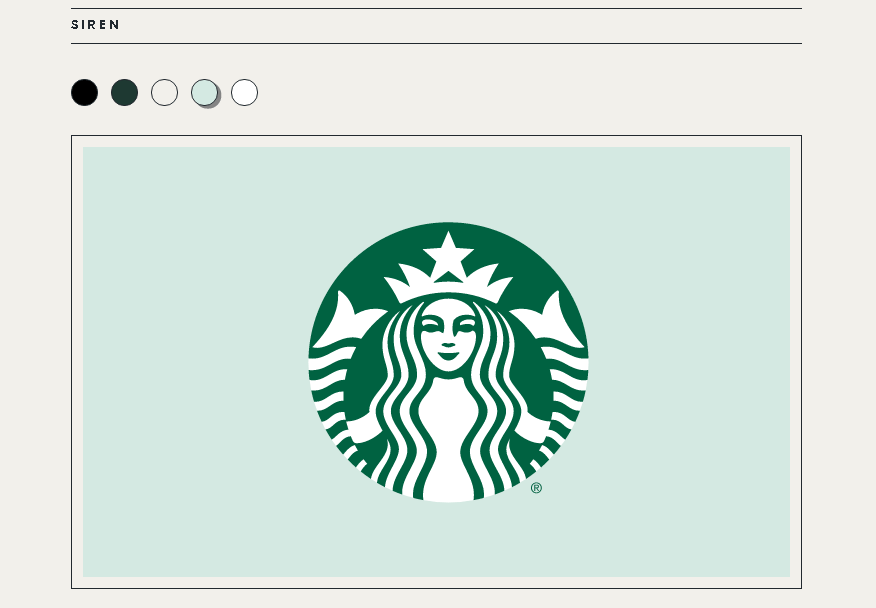
2. Skype
In Skype’s brand book, the brand’s tone of voice, logo designs, colors, typefaces, and other elements are all discussed in detail as to how they should be received across all forms of communication media.
Additionally, the motivation behind every design choice is explained so designers can get a feel for what the brand identity is, a great example for designers and marketers alike.
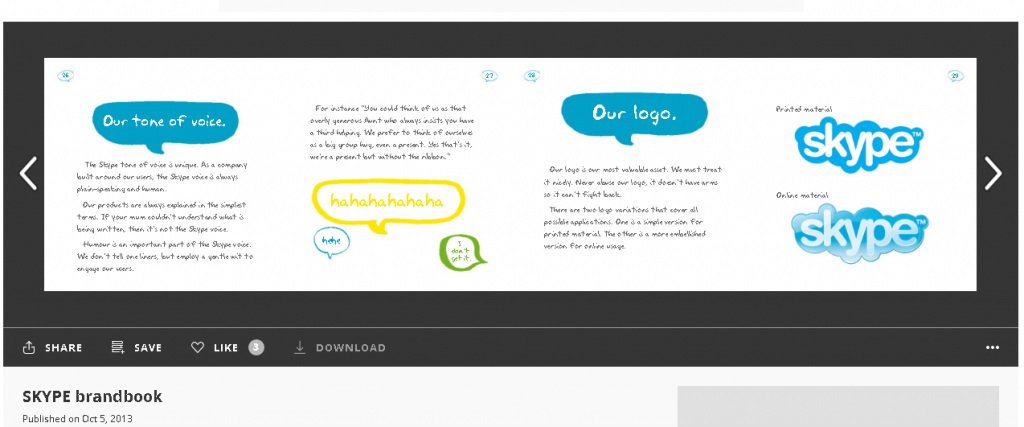
Using Skype as an example, when designing your own brand guidelines, it’s a good idea to include branding do’s and don’ts.
This will avoid misunderstandings that could result in problems further down the design line.
Skype makes it clear what they don’t want to be done with the logo usage to ensure it looks consistent and recognizable wherever it is seen:
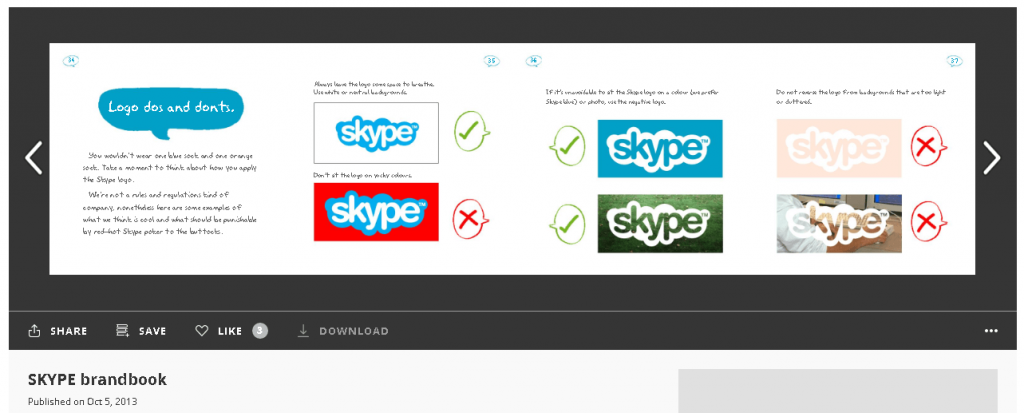
3. Audi
Audi is a household name worldwide, meaning the brand is replicated and promoted across the globe.
As you would expect from a household name such as Audi, the brand’s style guide is rather extensive.
The brand’s mission and vision are clearly explained, as well as what kind of feelings should be provoked when creating marketing campaigns.
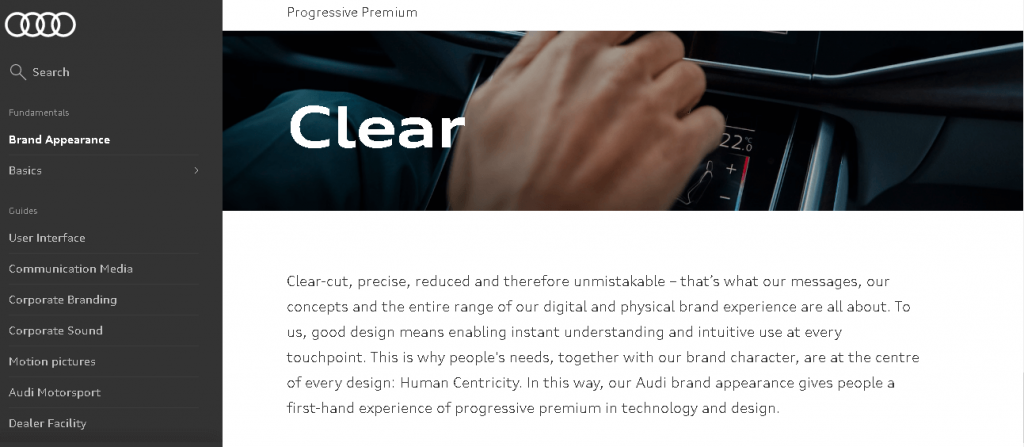
There are also guidelines on user interfaces, motion pictures, corporate branding, and even corporate sounds.
4. Asana
The designer behind the rebranding of the SaaS company Asana, Micah Daigle, wrote a brand book that laid out all the fundamental motivations behind what makes the brand what it is.
The team explained the brand attributes that represent it best, which is a good idea for getting a feel for brand identity.

The brand’s logo, which is as simple as three ‘corange’ (coral and orange) dots, represents the company’s aim to make it easy to collaborate as a team.
Choosing a logo representing the company’s service is clever, though not always feasible.
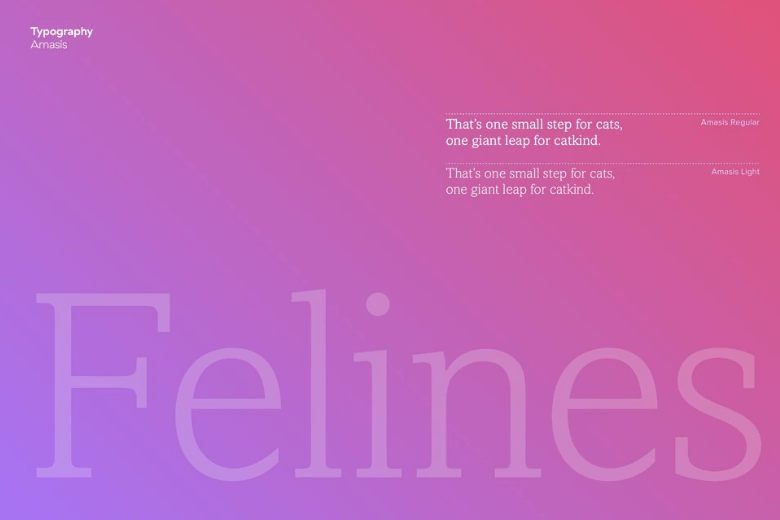
5. Urban Outfitters
The brand Urban Outfitters focuses on quirky product shots and edgy designs, which are reflected in any media the brand releases.
Its brand style guide goes into detail about logo designs, typography, do’s and don’ts, as well as the photography methodology used when creating content.
Even the store environment is discussed to give designers a better idea of what the brand is all about online and offline.
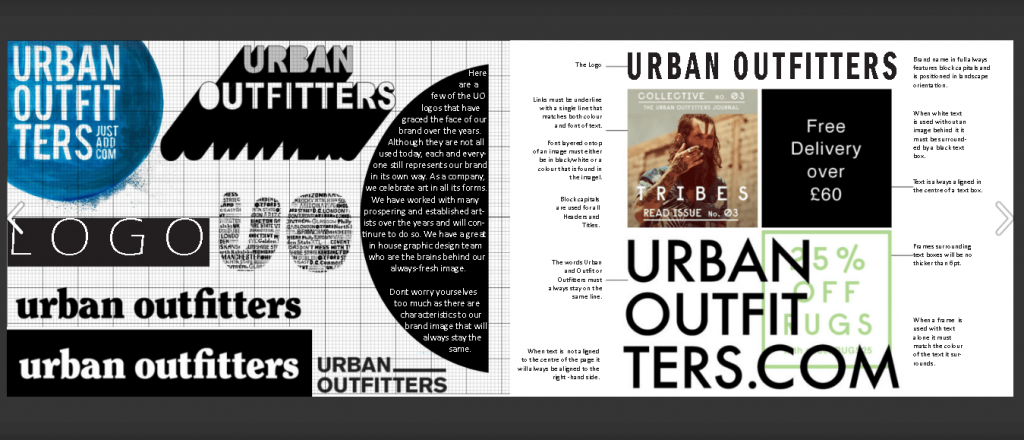
6. Uber
Uber has a comprehensive style guide that explains how color is used by the brand, how they approach photography, and what their tone of voice is.
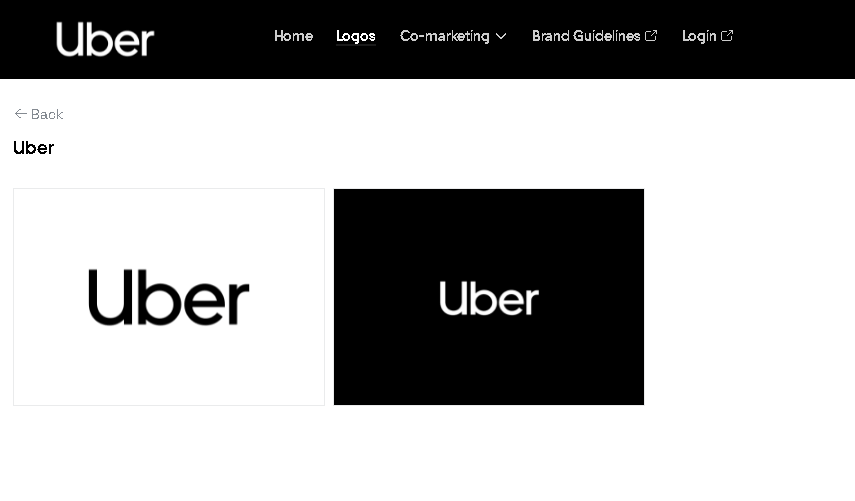
It is clear from the information shared that Uber likes to keep their design simplistic and elegant, using negative space in recognizable black and white colors.
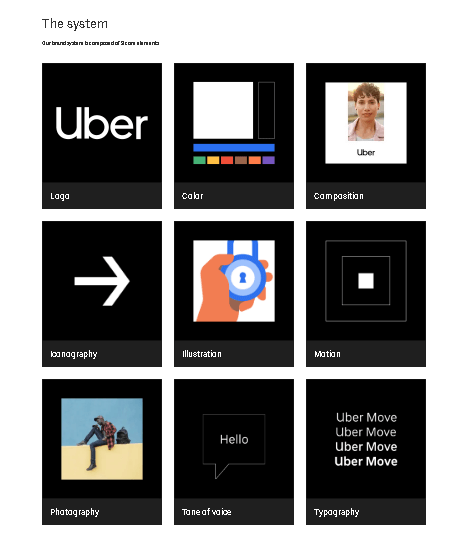
7. NASA
NASA has thorough brand guidelines that are meant to be followed to the T.
Having such specific style rules is a good idea if it’s very important to your brand that elements like logo and typography are never wrong or inaccurate.
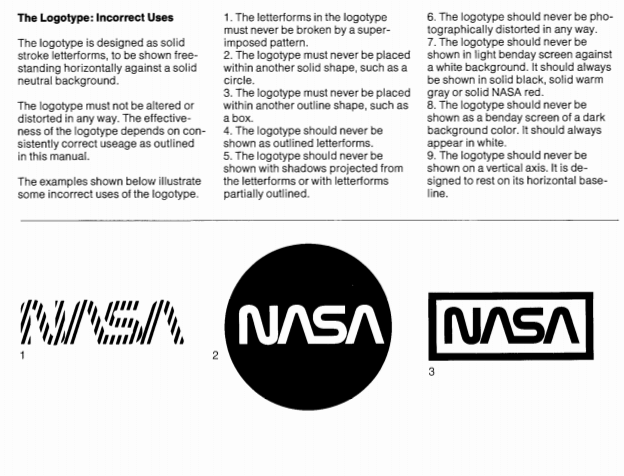
No stone is left unturned within the guidelines, and the attention to detail is quite admirable. There are also examples of using the style rules to ensure branding is done right in any given situation.
Even an example of the brand’s letterhead is shown — NASA is serious about consistency.
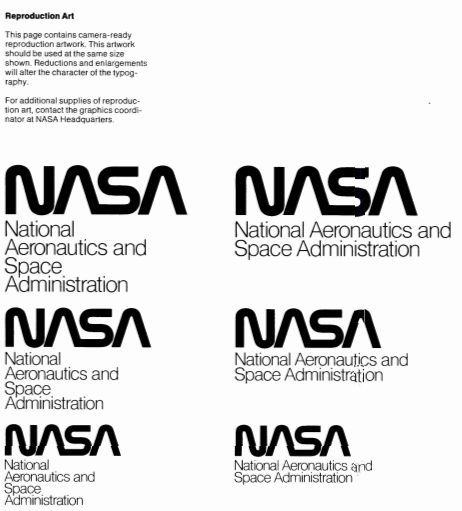
8. Spotify
Spotify‘s brand style guidelines are straightforward and concise. The guide discusses the importance of their defined color palette and how it should be used in relation to the company’s branding.
The guidelines also delve into how links to Spotify must be handled, how the logo is used (even logo placement), outlines naming restrictions, and discusses typography.
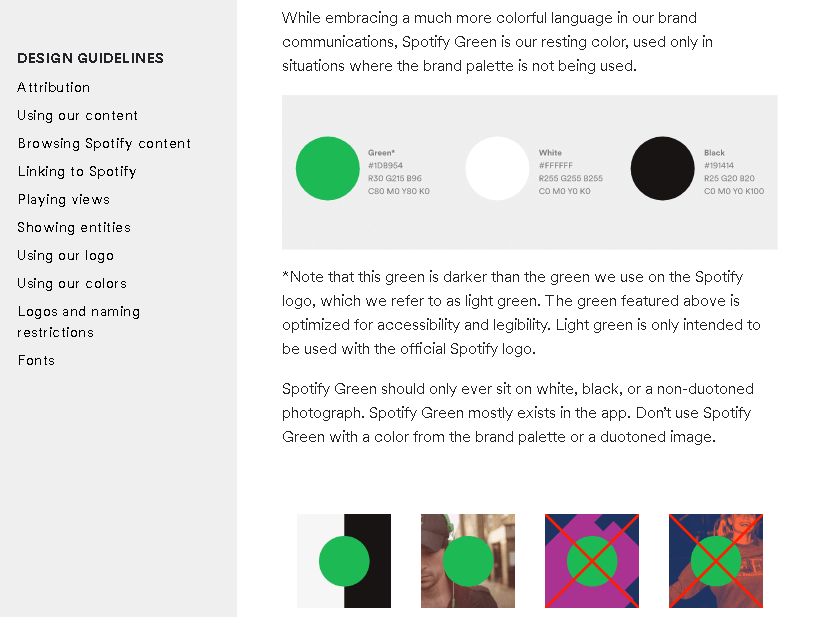
If you’re going to be digital in your marketing approach (which is recommended), you should have a brand guideline that considers all aspects of web design and different types of online engagement.
You have to keep in mind how logos, as well as secondary logos, will change in appearance when viewed on different platforms or in different modes (i.e., dark mode), how your palette’s colors might be affected, etc.
9. Alienware
Alienware has designed its logo and chosen instantly recognizable and simple brand colors to reflect its focus on the gaming industry.
Compared to other gaming industry brands, Alienware uses white space within its company logo, setting them apart from core competitors.
In its brand style guide, the company lays out how its color palette is used and what its tone of voice is.
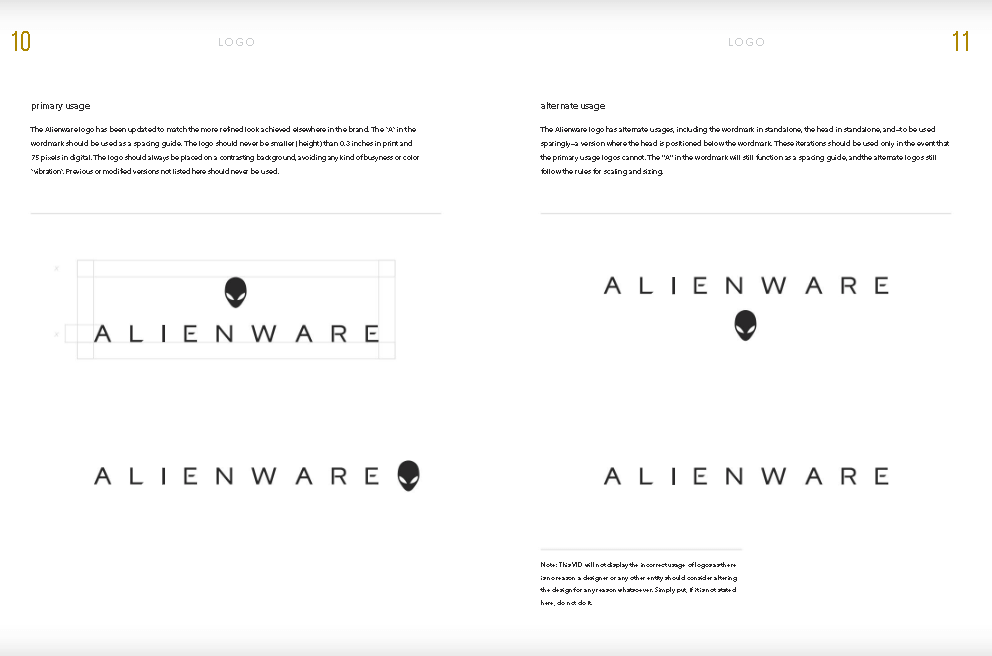
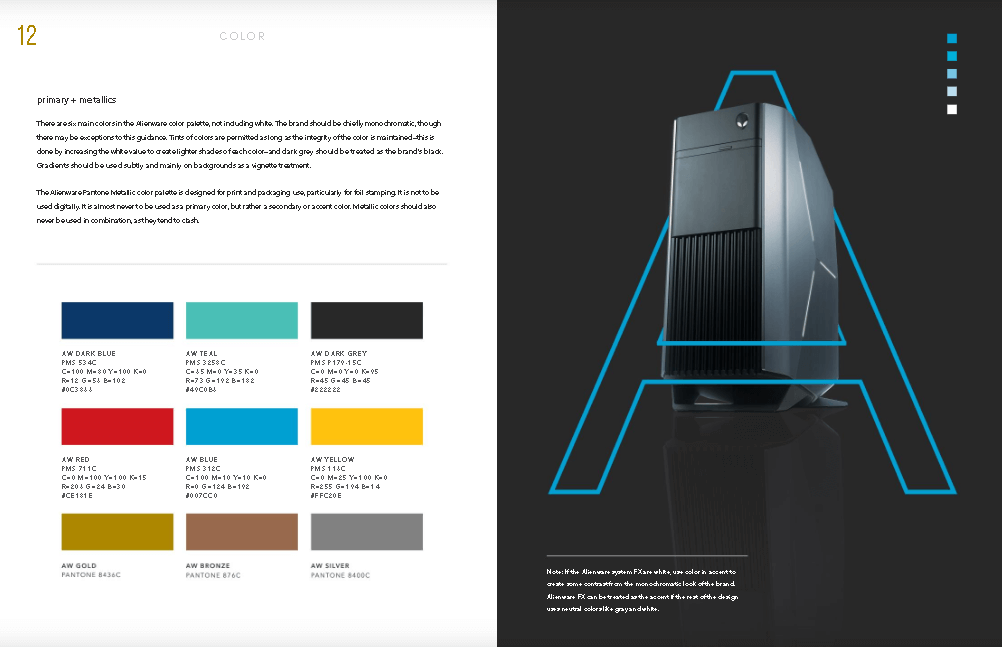
10. MailChimp – Voice & Tone Brand Guide
If a brand understands the importance of a consistent brand guideline, it’s MailChimp.
They have an entire guide dedicated to voice and tone alone, highlighting how important it is to get these elements right through digital elements, visual elements, and, ultimately, a holistic brand strategy.
The brand identity’s emphasis is on creating content that is friendly, human, and feels familiar to MailChimp’s audience.
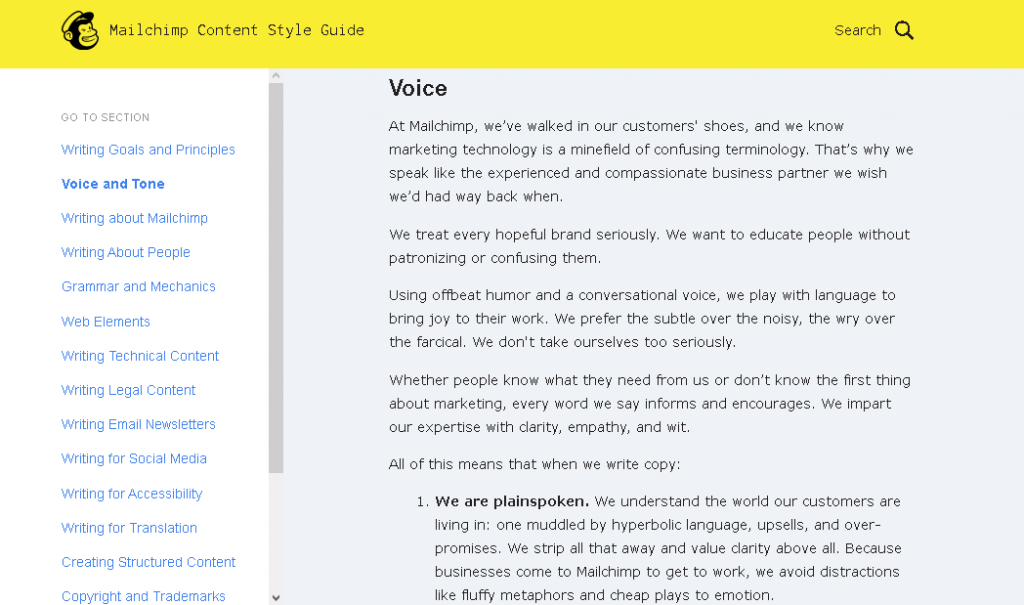
Although other brand elements like color and typography aren’t discussed in this brand guide, it’s still very comprehensive on what the company aims to achieve through voice and tone.
11.YouTube
The brand guidelines of video-streaming service YouTube are concise and cover all the important basic brand elements to ensure brand consistency.
YouTube’s logo is one of the most easily recognizable in the world, so it’s no wonder the brand’s style guide is comprehensive when discussing what may or may not be done with it.
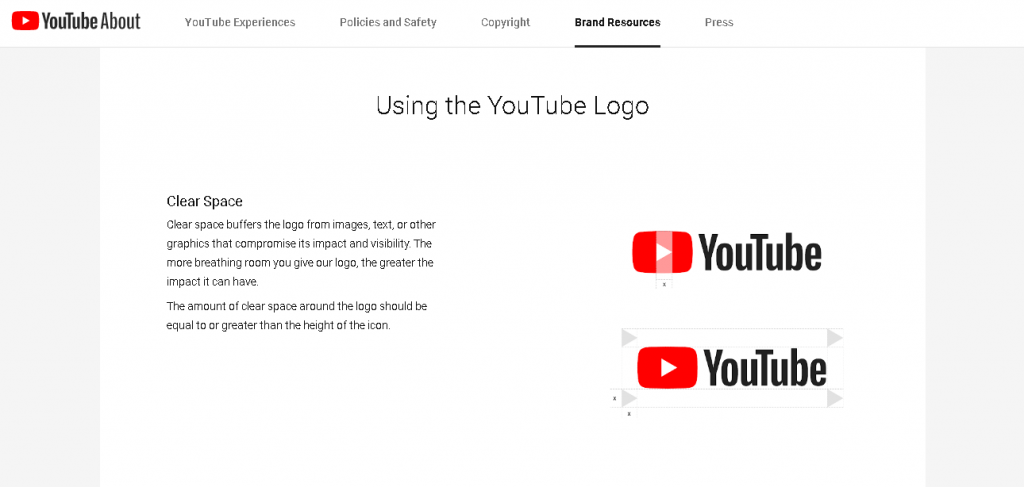
If you’re planning to use video marketing strategies, it’s essential that you have thorough brand guidelines for your team to work with.
Perhaps also outline which video editing software you prefer to use for your content.
12. Slack
Slack has a standard ‘Media Kit’ that explains all the rules that must be followed regarding everything from brand colors to logos and content.
As one of our more basic guide examples, it still delves into the brand’s values, tone of voice, and personality to lay out what it aims to achieve with its audience through its visual identity.
Color usage and typography are also discussed, accompanied by clear brand guideline examples.
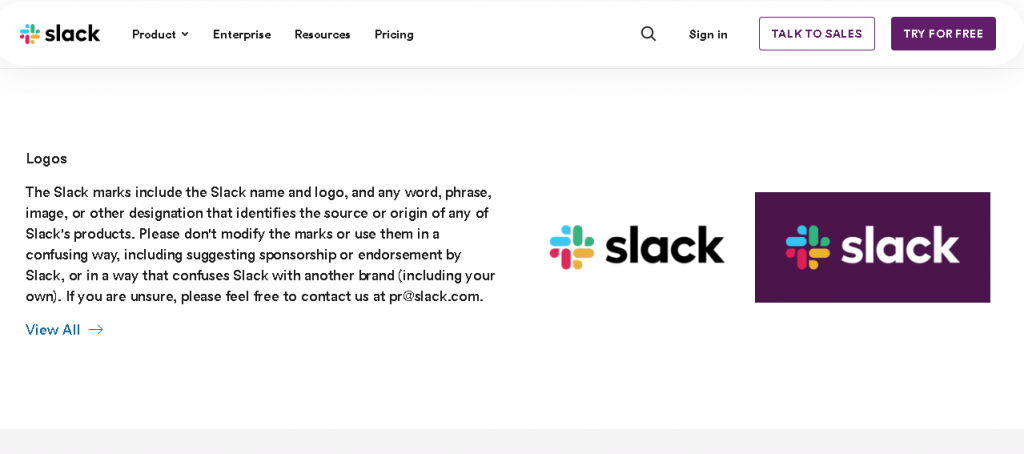
13. Zendesk
Zendesk has a unique approach to its brand style guide, which is called ‘Brandland.’
In this brand guideline, the company discusses everything there is to know about the brand, its philosophy, and its attributes.
The guide also discusses consistent brand identity, typography, and the brand’s color palette, as well as how it should be employed in visual brand elements.
Other core elements, such as corporate sound and photography rules, are also discussed in detail.
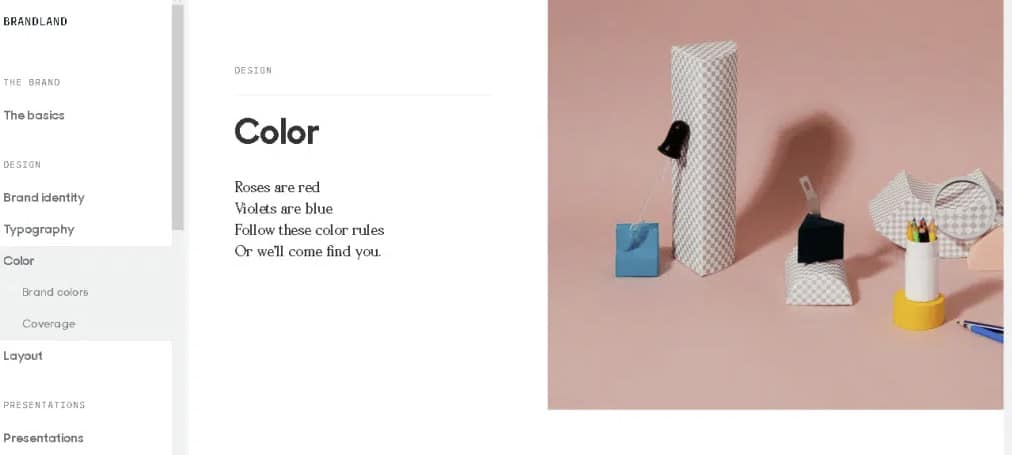
When a brand guide goes into so much trouble to show off what it is and how it should be represented, marketers find it easier to capture its essence in marketing and when creating content.
14. Medium
Medium’s brand guidelines take time to dive into exactly what it allows and doesn’t allow in relation to its visual identity.
Typography is discussed in depth and detail with clear examples of what written content should look like.
It also discusses how colors are used and how to implement the brand’s iconography.
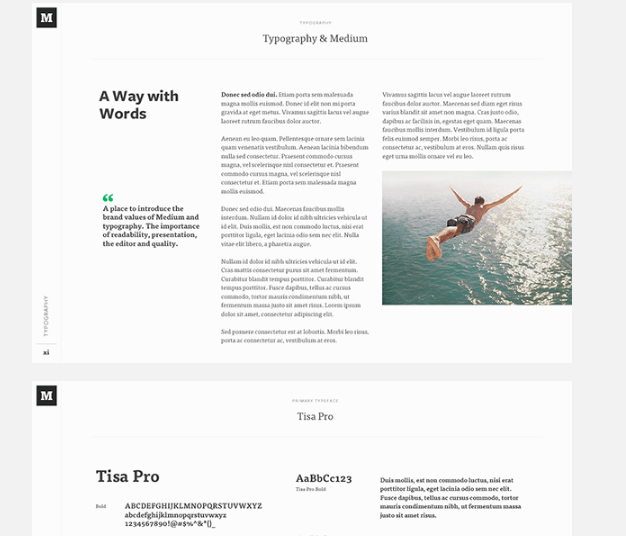
3 tips on how to create brand guidelines
Creating a brand style guide is essential for any new brand looking to establish a consistent brand identity. It serves as a foundational guidebook to create a unified and recognizable brand across multiple platforms and mediums.
Here are five practical tips to consider when creating your own brand guidelines.
Keep your mission statement in mind
Your mission statement communicates your brand’s purpose and goals. It’s a pivotal element in creating your brand guidelines as it shapes your brand’s voice, aesthetics, and strategies.
By consistently aligning your brand with your mission statement, you ensure that all aspects of your business, from product development to customer service, align with your brand identity.
A common mistake is crafting brand guidelines that deviate from the mission statement. This creates confusion and makes your brand appear inconsistent and disjointed.
To ensure alignment, reiterate it at the beginning of your brand guidelines. Ensure all aspects of your brand, from logo design to tone of voice, align with this statement.
Write detailed brand guidelines for different channels
Different channels necessitate different approaches. Be it your website, social media, email marketing, or print materials, each platform needs its own detailed guideline.
A common pitfall is assuming that one-size-fits-all for all platforms. This neglects the unique specifications and audience behavior on different channels, leading to diluted brand impact.
In order to effectively represent your brand on different channels, it is essential to have detailed channel-specific guidelines that outline the specific requirements and expectations for each platform.
The brand guidelines should provide instructions on how to use the brand logo, colors, typography, and imagery in a consistent manner across all social media platforms. They should also specify the tone of voice and style of communication that should be used when interacting with customers.
Consistency in brand representation is key to building brand loyalty and ensuring a unified brand image across all channels.
Less is more: keep it simple
Aesthetic appeal and readability are paramount for effective brand guidelines. Overcrowded and complicated guidelines may lead to confusion and inconsistency in brand application.
The usual mistake is trying to fit in too much information into your brand rules without considering readability. This can make your guidelines feel overwhelming and hard to follow.
Create simple brand guidelines by writing down the most essential details. After the first draft, start removing any additional detail until you’re left with brand guidelines that you can’t do without.
Your aim is to boil down your brand guidelines into something your creative team can understand easily at a glance.
Make Your Brand Guidelines As Easy To Understand As Possible
Creating brand guidelines is an important step for any brand, and getting it right is crucial.
It’s just as important to make the guidelines easy to understand and even easier to adhere to, from making marketing materials to social media content and sales slide decks.
Here at Piktochart, we hope that the aforementioned best examples of brand guidelines help and act as a basic instruction manual to support you on your creative branding journey!
Don’t forget, when you need to present your new brand style guide to your manager or boss, you can use Piktochart to create presentations that keep your listeners’ attention. Create an account and try it out yourself for free.
About the Author
Mark Quadros is a SaaS content marketer that helps brands create and distribute rad content.


